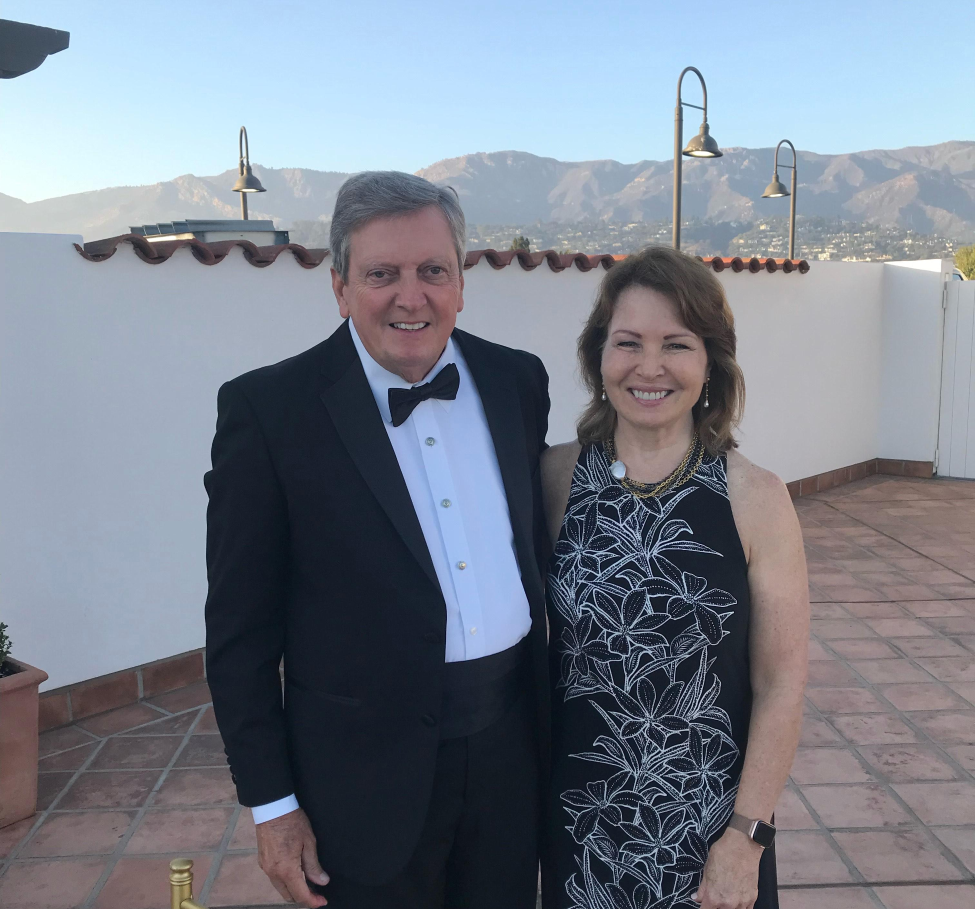Parkinson’s patient enrolls in stem cell therapy trial at UTHealth Houston in an effort to slow disease progression


In the thick of the 2008 financial crisis, Marty Young Jr. – then a partner and CFO of a private equity firm and board chair for insurance and oil and gas companies – simply thought he was stressed when his fingers twitched while using a computer mouse.
But over the years, Young’s anxiety over the hand twitching led him to stop flying his private airplane, a longtime hobby of his.
“People had been telling me they thought I had Parkinson’s disease, but when I did the research, I learned there was no cure, and I didn’t think there was any reason to see a specialist until my symptoms worsened,” said Young, now 69 years old and retired.
However, in 2019, he saw a movement disorder specialist, who diagnosed Young with Parkinson’s disease and later referred him to Mya C. Schiess, MD, professor in the Department of Neurology and director and founder of the Movement Disorders and Neurodegenerative Diseases subspecialty clinic and fellowship program with McGovern Medical School at UTHealth Houston.
Schiess had recently launched a randomized, double-blinded, placebo-controlled Phase II clinical trial investigating whether mesenchymal adult stem cells could reduce or even halt the progression of Parkinson’s disease. Wanting to help researchers find a cure for the neurodegenerative disorder, which is diagnosed in approximately 60,000 people in the U.S. annually, Young decided to enroll in the trial – the first of its kind in the nation.
“Over the past 50 years, the bulk of Parkinson’s disease therapy has focused on treating disease symptoms,” Schiess said. “We’ve since shifted that focus to treating the disease process, with the intent of ultimately slowing it down, possibly stopping it.”
In Phase I of the study, researchers learned there were no serious adverse reactions related to the stem cell infusion, including no immunological reactions to the cells, which come from the bone marrow of a healthy adult donor. Study results also showed a reduction in peripheral inflammatory markers, increased brain blood flow, and a reduction in motor symptoms among patients.
Additionally, previous research has shown that a chronic neuroinflammatory process is one of the forces playing a critical role in the disease’s development and progression. This process damages the brain’s microenvironment and alters its healthy equilibrium. Inflammation drives the neurodegeneration in the brain areas that control movement, causing tremors, slowness, imbalance, speech difficulty, and other motor and non-motor symptoms.
By 2040, Parkinson’s disease is predicted to affect 17.5 million people worldwide.
“Cases of Parkinson’s disease are increasing dramatically because people are living longer, and as we age, our immune system weakens,” Schiess said.
Young is among 45 patients participating in the trial, which is assessing the effectiveness of repeat doses of stem cells to slow the progression of Parkinson’s disease. Patients receive three infusions of either placebo or stem cell therapy at four-month intervals, and they will be followed for another year after their last infusion. Young’s third and final infusion is scheduled for this summer.
Because the experiment is double-blinded, Young does not know whether he is receiving the stem cell therapy, nor does Schiess’ team. Nonetheless, he is happy with his progress, considering his last motor test revealed a 30% improvement compared to the test he took during his trial screening.
Young also hopes to slow his disease progression by staying active. He plays golf four days a week, attends boxing sessions geared toward people with Parkinson’s Disease in The Woodlands three days a week, trains twice a week with a personal trainer, and lifts weights regularly.
“I can’t ever take a day off, but I’m thankful there are numerous teams of professionals trying to find a cure for this disease,” Young said. “I can’t speak highly enough of what a dedicated team Dr. Schiess has put together. I firmly believe they’ll find a solution because of the quality of people she has assembled.”
The trial, approved by the U.S. Food and Drug Administration, is supported with funding from the Michael J. Fox Foundation, John S. Dunn Foundation, and John and Kyle Kirksey. Phase II is expected to wrap in December 2023.
Media Inquiries: